Hubble makes surprising find in the early universe
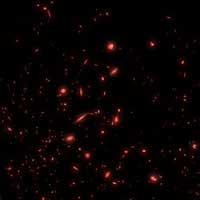 New results from the Hubble Space Telescope suggest the formation of the first stars and galaxies in the early Universe took place sooner than previously thought.
New results from the Hubble Space Telescope suggest the formation of the first stars and galaxies in the early Universe took place sooner than previously thought.
Jun 4th, 2020
Read more
 Subscribe to our Space Exploration News feed
Subscribe to our Space Exploration News feed
 New results from the Hubble Space Telescope suggest the formation of the first stars and galaxies in the early Universe took place sooner than previously thought.
New results from the Hubble Space Telescope suggest the formation of the first stars and galaxies in the early Universe took place sooner than previously thought.
Jun 4th, 2020
Read more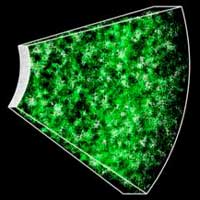 A new paper has shown how large structures in the distribution of galaxies in the Universe provide the most precise tests of dark energy and cosmic expansion yet.
A new paper has shown how large structures in the distribution of galaxies in the Universe provide the most precise tests of dark energy and cosmic expansion yet.
Jun 3rd, 2020
Read more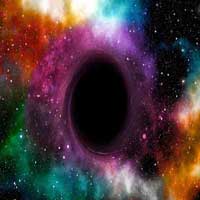 According to new research, black holes could be like a hologram, where all the information is amassed in a two-dimensional surface able to reproduce a three-dimensional image.
According to new research, black holes could be like a hologram, where all the information is amassed in a two-dimensional surface able to reproduce a three-dimensional image.
Jun 3rd, 2020
Read more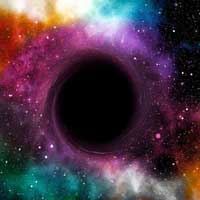 A new ultra-bright source of X-rays has awakened in between our galactic neighbours the Magellanic Clouds, after a 26-year slumber. This is the second-closest such object known to date, with a brightness greater than a million Suns.
A new ultra-bright source of X-rays has awakened in between our galactic neighbours the Magellanic Clouds, after a 26-year slumber. This is the second-closest such object known to date, with a brightness greater than a million Suns.
Jun 3rd, 2020
Read more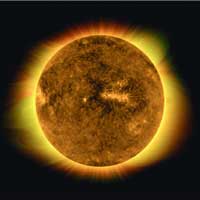 The mechanism responsible for heating the corona to two million degrees, especially for the quiet Sun, has remained an enduring mystery. Scientists have now found the first direct observational evidence in support of one of the proposed mechanisms for heating the quiet corona. They have discovered tiny flashes of radio light from all over the Sun, smoking guns for tiny magnetic explosions which convert the copious magnetic energy present in the quiet corona into heat.
The mechanism responsible for heating the corona to two million degrees, especially for the quiet Sun, has remained an enduring mystery. Scientists have now found the first direct observational evidence in support of one of the proposed mechanisms for heating the quiet corona. They have discovered tiny flashes of radio light from all over the Sun, smoking guns for tiny magnetic explosions which convert the copious magnetic energy present in the quiet corona into heat.
Jun 2nd, 2020
Read more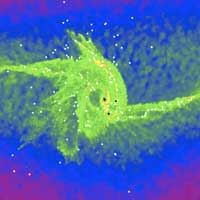 In this theory, the precursors of supermassive black holes grow by swallowing up not only interstellar gas, but also smaller stars as well. This helps to explain the large number of supermassive black holes observed today.
In this theory, the precursors of supermassive black holes grow by swallowing up not only interstellar gas, but also smaller stars as well. This helps to explain the large number of supermassive black holes observed today.
Jun 2nd, 2020
Read more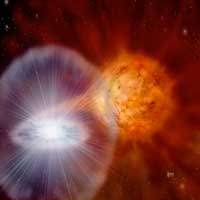 Scientists have combined theory with both observations and laboratory studies and determined that a class of stellar explosions, called classical novae, are responsible for most of the lithium in our galaxy and solar system.
Scientists have combined theory with both observations and laboratory studies and determined that a class of stellar explosions, called classical novae, are responsible for most of the lithium in our galaxy and solar system.
Jun 2nd, 2020
Read more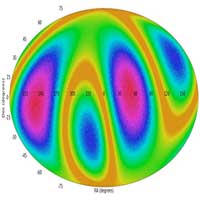 An analysis of more than 200,000 spiral galaxies has revealed unexpected links between spin directions of galaxies, and the structure formed by these links might suggest that the early universe could have been spinning.
An analysis of more than 200,000 spiral galaxies has revealed unexpected links between spin directions of galaxies, and the structure formed by these links might suggest that the early universe could have been spinning.
Jun 1st, 2020
Read more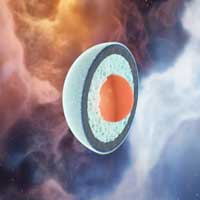 A research group has found strong evidence for the presence of exotic quark matter inside the cores of the largest neutron stars in existence. The conclusion was reached by combining recent results from theoretical particle and nuclear physics to measurements of gravitational waves from neutron star collisions.
A research group has found strong evidence for the presence of exotic quark matter inside the cores of the largest neutron stars in existence. The conclusion was reached by combining recent results from theoretical particle and nuclear physics to measurements of gravitational waves from neutron star collisions.
Jun 1st, 2020
Read more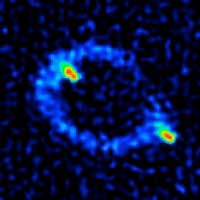 Astronomers made innovative use of their time while sheltering at home due to the pandemic by combing through W. M. Keck Observatory and NASA archive data. They rediscovered the first Einstein ring and found the distance of its source was never measured. The researchers are the first to make the calculation and found the quasar to be 10 billion light-years away, or a redshift of z=1.849.
Astronomers made innovative use of their time while sheltering at home due to the pandemic by combing through W. M. Keck Observatory and NASA archive data. They rediscovered the first Einstein ring and found the distance of its source was never measured. The researchers are the first to make the calculation and found the quasar to be 10 billion light-years away, or a redshift of z=1.849.
Jun 1st, 2020
Read more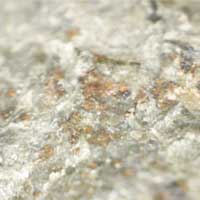 Using advanced techniques, scientists have detected organic compounds containing nitrogen in Martian meteorites which were ejected from Mars' surface some 15 million years ago, proving that evidence for early life can be preserved and detected today.
Using advanced techniques, scientists have detected organic compounds containing nitrogen in Martian meteorites which were ejected from Mars' surface some 15 million years ago, proving that evidence for early life can be preserved and detected today.
May 29th, 2020
Read more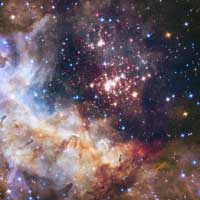 Astronomers are finding that planets have a tough time forming in the rough-and-tumble central region of the massive, crowded star cluster Westerlund 2. Located 20,000 light-years away, Westerlund 2 is a unique laboratory to study stellar evolutionary processes because it's relatively nearby, quite young, and contains a large stellar population.
Astronomers are finding that planets have a tough time forming in the rough-and-tumble central region of the massive, crowded star cluster Westerlund 2. Located 20,000 light-years away, Westerlund 2 is a unique laboratory to study stellar evolutionary processes because it's relatively nearby, quite young, and contains a large stellar population.
May 28th, 2020
Read more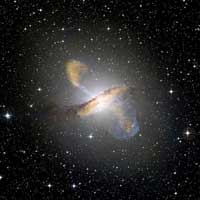 Active galactic nuclei (AGNs) play a major role in galaxy evolution. Astronomers have now used a record-sized sample of galaxies to confirm that galaxy mergers have a positive effect on igniting AGNs.
Active galactic nuclei (AGNs) play a major role in galaxy evolution. Astronomers have now used a record-sized sample of galaxies to confirm that galaxy mergers have a positive effect on igniting AGNs.
May 28th, 2020
Read more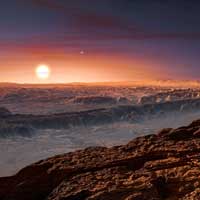 The existence of a planet the size of Earth around the closest star in the solar system, Proxima Centauri, has been confirmed by an international team of scientists.
The existence of a planet the size of Earth around the closest star in the solar system, Proxima Centauri, has been confirmed by an international team of scientists.
May 28th, 2020
Read more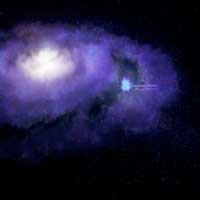 Astronomers have used mysterious fast radio bursts to solve a decades-old mystery of 'missing matter', long predicted to exist in the Universe but never detected - until now.
Astronomers have used mysterious fast radio bursts to solve a decades-old mystery of 'missing matter', long predicted to exist in the Universe but never detected - until now.
May 28th, 2020
Read more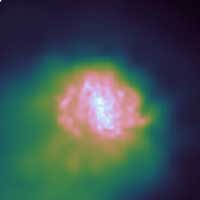 A new study shows that some supermassive black holes actually thrive under pressure.
A new study shows that some supermassive black holes actually thrive under pressure.
May 27th, 2020
Read more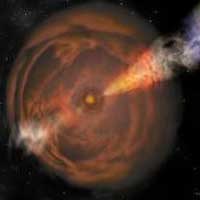 'A new beast is out there', astrophysicist says of object found in tiny galaxy.
'A new beast is out there', astrophysicist says of object found in tiny galaxy.
May 27th, 2020
Read more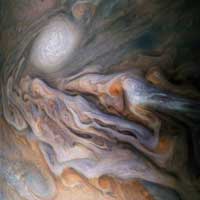 Model predicts likelihood of exotic clouds on hot Jupiters; finds mostly silicate clouds.
Model predicts likelihood of exotic clouds on hot Jupiters; finds mostly silicate clouds.
May 27th, 2020
Read more